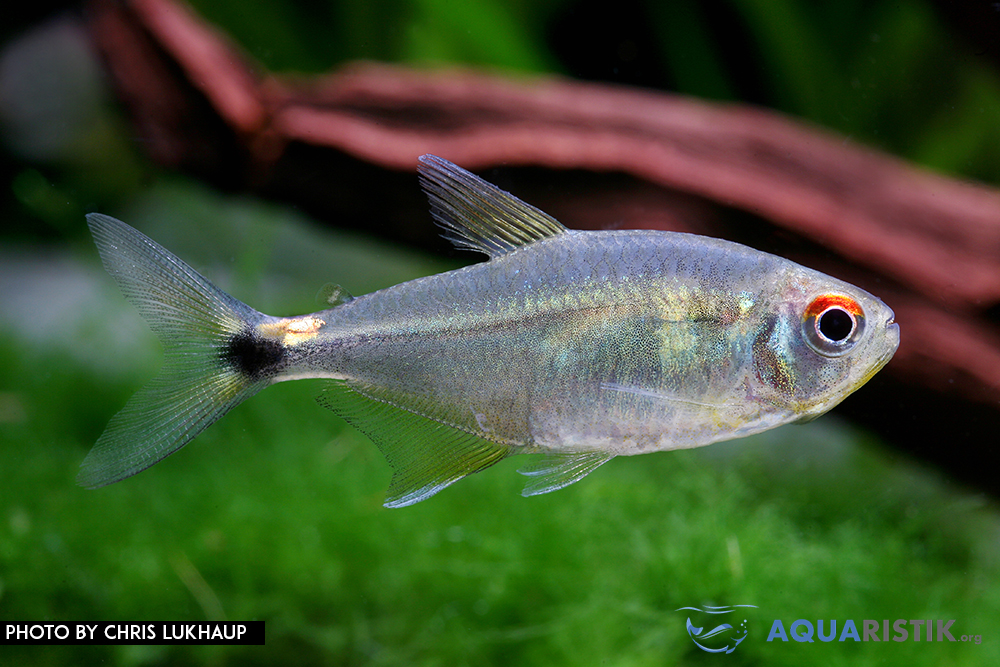Today we present you the so-called Tail light tetra before which one but not only after the Latin name Hemigrammus ocellifer names, but he is also repeatedly given the names of Eye spot tetra, lantern bearer, luminous spot tetra, lantern tetra and spotted tetra connected. Here you can find out why it is called that and what you need to know about keeping it. The somewhat larger and high-backed species of tetras creates a quite respectable aquarium in a nice swarm.

Keeping of the taillight tetras Hemigrammus ocellifer
Let's first come to the usual body of water where the tetra lives. He, too, as with the blue one Peru Tetra mentioned comes from the Amazon Basin and associated rivers. The taillight tetra is also found in Guianas. But compared to the Peru tetra, they live in rather calm waters. Especially in areas near the shore. The diet in the wild is mainly based on crustaceans and insects.
Today you will hardly be able to buy any more wild caught from us. Most specimens come from large breeding farms in Eastern Europe. In the wild, the animals can live up to 8 years.
Characteristics and appearance of the Taillight Tetra
Of course, we also take a look at the characteristics of the small freshwater fish. The body length will reach a maximum of 5 cm, but compared to other tetra species, these animals are higher backed. The males remain smaller than the females. You can also recognize a male by the hooks on the first fin ray. Females do not have this. The body has a rather transparent coloration and in certain light you can see through the fish. The tail light tetra got its name and therefore also its main identification feature from the spot on the rear area from the body to the transition of the caudal fin. You should be able to see this quite nicely in the picture. This is usually reddish to golden. Below this spot on the base of the tail there is another black dot. The whole thing looks like a “tail light”. Many also see this spot as more of an orange.
Keeping and caring for taillight tetras
Let us now come to the keeping of the animals in our aquarium. In our aquarium, taillight tetras tend to get shy at times. So that this does not happen, you have to make sure that there is good planting, so that the animals can withdraw from time to time.
This tetra species also needs a group to feel comfortable. They should be kept in groups of 8 to 10 animals. Bigger groups are even better. Therefore, one should not use the animals under 100 liters. It is also better to buy the animals only from about 200 liters. Then groups of 20 animals are also possible.
When socializing, you should make sure that rather calm and peaceful species are used.
As far as the temperature is concerned, a pool between 22 and 28 degrees will also be fine here. usually the mean value of 25 degrees should be aimed for. The P value should be around 6 to 7,5 and the total hardness of the water should not exceed 20. So let's summarize the most important things again:
Characteristics of the taillight tetra Hemigrammus ocellifer
- Aquarium from 100 liters
- Only keep in groups of 8 or more animals
- Grows to around 5 cm
- rather quiet and shy residents
- Temperature 22-28 degrees
- Ph value 6 - 7,5
- GH value up to 20
- Eat dry food, live food of smaller species
Breeding of the taillight tetras Hemigrammus ocellifer
Compared to the Peru tetras, there are significantly more successful breeding reports to be found here. Here you should first raise the water temperature by 2 to 3 degrees. You should also make sure that the hardness is in the range of no more than 15. These tetras are also free spawners and you should ensure good planting in the breeding tank. fine-leaved plants are particularly suitable here.
But here, too, the parents must be removed quickly after spawning, because they would eat the spawn. If you manage to catch the right time, the chances of success are quite good. Most spawn after a day. A matching pair is always required. And of course a spawning approach in the female. The young hatch after just 2 days and feed on their yolk sac for the first few days. Then it should be fed with dust food and microorganisms. After about 3 days the yolk sac is used up and the young are already swimming freely.





